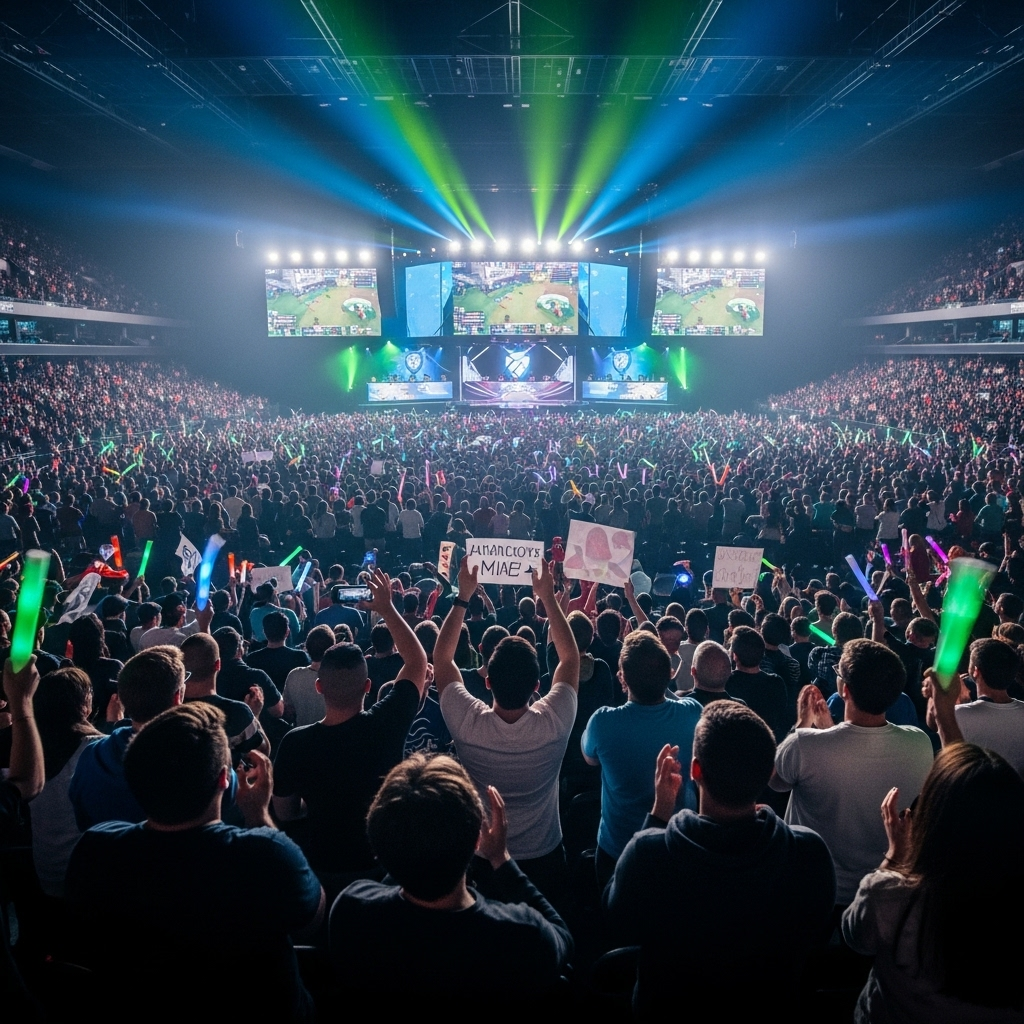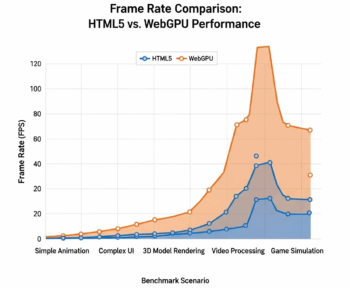The esports industry has evolved from grassroots competitions in basement LAN parties to a multi-billion dollar ecosystem filling stadiums and commanding viewership that rivals traditional sports. With tournaments regularly exceeding 7 million concurrent viewers and prize pools surpassing $40 million, competitive gaming has established itself as a legitimate entertainment vertical with complex economics that extend far beyond prize money.
The Viewership Phenomenon
The scale of esports viewership has reached levels that demand attention from mainstream media and advertisers. The 2024 League of Legends World Championship peaked at 8.2 million concurrent viewers, excluding Chinese platforms where numbers potentially exceeded 50 million. These figures surpass many traditional sporting events, with engaged audiences that skew younger and more internationally diverse than conventional sports.
The viewing experience for esports differs fundamentally from traditional sports in ways that enhance engagement. Multiple viewing angles, player perspectives, and integrated statistics create immersive experiences impossible in physical sports. Viewers can switch between player POVs, access real-time stats, and interact through platform-integrated chat systems. This interactivity creates deeper engagement than passive television viewing.
Platform diversification has expanded esports reach beyond traditional streaming services. While Twitch remains dominant in Western markets, YouTube Gaming, Facebook Gaming, and regional platforms like Douyu and Huya compete for viewers. This competition has driven innovation in viewing features and monetization models that benefit the entire ecosystem.
Revenue Stream Diversification
The economics of esports have evolved far beyond prize pools to encompass multiple revenue streams. Sponsorship represents the largest revenue source, accounting for approximately 60% of industry revenues. Endemic sponsors like gaming hardware manufacturers have been joined by non-endemic brands from automobiles to financial services, recognizing esports’ valuable demographic reach.
Media rights have become increasingly valuable as traditional broadcasters recognize esports’ potential. Exclusive broadcasting deals for major leagues now command eight-figure annual fees. The Overwatch League’s reported $90 million two-year streaming rights deal with YouTube demonstrated that platforms will pay premium prices for exclusive esports content.
Merchandise and licensing provide additional revenue streams that extend beyond events themselves. Team jerseys, limited edition collaborations, and digital items generate significant revenues while building fan loyalty. The integration between physical merchandise and in-game items creates unique opportunities, with fans able to support teams through both traditional and digital purchases.
Team Economics and Sustainability
Professional esports organizations operate complex businesses that extend beyond competitive rosters. Revenue sources include sponsorships, merchandise sales, content creation, and prize winnings, though few teams achieve profitability from competition alone. The focus has shifted toward building media brands that monetize through multiple channels rather than relying solely on tournament success.
Player salaries in top esports have reached levels comparable to traditional sports, with star players commanding seven-figure annual contracts. However, the average professional player earns significantly less, creating economic disparities within teams and regions. The short career spans in esports—typically 5-7 years—intensify financial pressures on players to maximize earnings during their competitive prime.
The franchise model adopted by leagues like the Call of Duty League and Overwatch League represents attempts to create sustainable team economics. Franchise fees ranging from $20-60 million provide leagues with capital while giving teams territorial rights and revenue sharing. However, the success of this model remains mixed, with some franchises struggling to generate returns on these substantial investments.
Tournament Organization Economics
The economics of running major esports tournaments involve massive investments in production, venues, and prize pools. Production costs for tier-one events can exceed $10 million, with elaborate stage designs, broadcast equipment, and technical staff. These investments are necessary to create spectacular experiences that justify premium ticket prices and attract broadcast audiences.
Prize pool funding has evolved beyond publisher support to include community contributions. The International’s crowdfunded prize pool model, where battle pass sales contribute to prizes, has generated the largest prize pools in esports history. This approach aligns player and fan interests while providing publishers with additional revenue streams.
Venue economics present unique challenges for esports events. While traditional sports have dedicated facilities, esports must rent and transform conventional venues for each event. This creates higher per-event costs but allows flexibility in location selection. Purpose-built esports arenas in cities like Arlington and Philadelphia represent long-term bets on the industry’s sustained growth.
Sponsorship and Brand Integration
Sponsorship in esports has evolved from simple logo placement to sophisticated integrated campaigns. Brands create custom content, sponsor specific segments, and develop co-branded merchandise. The measurability of digital engagement provides sponsors with detailed ROI metrics unavailable in traditional sports sponsorship.
Non-endemic sponsors have driven significant growth in sponsorship values. Mastercard, Mercedes-Benz, and State Farm represent mainstream brands investing heavily in esports. These partnerships bring marketing expertise and budgets that elevate production values and expand audience reach beyond core gaming demographics.
The integration of sponsors into gameplay through branded content has created new monetization opportunities. In-game advertisements, sponsored game modes, and branded virtual items generate revenues while maintaining audience engagement. This native advertising approach resonates with younger audiences skeptical of traditional advertising.
Regional Market Dynamics
The global nature of esports creates complex regional dynamics in economics and viewership. Asian markets dominate viewership numbers but generate lower per-viewer revenues due to different monetization models and economic factors. Western markets produce higher revenues per viewer but smaller absolute audiences.
China’s esports market operates under unique conditions with government support, massive infrastructure investments, and integrated ecosystems combining streaming, social media, and gaming. The economic model differs significantly from Western markets, with virtual gifting and integrated e-commerce generating revenues unavailable in other regions.
Emerging markets in Latin America, Middle East, and Africa represent growth opportunities with rapidly expanding player bases and improving infrastructure. These regions offer lower operational costs for tournaments and untapped sponsorship markets. However, monetization remains challenging due to lower purchasing power and less developed payment infrastructure.
Broadcasting and Production Innovation
The production quality of major esports events now rivals traditional sports broadcasts. Multi-million dollar control rooms, dozens of cameras, and sophisticated graphics packages create premium viewing experiences. Augmented reality integration, used extensively in League of Legends broadcasts, adds visual spectacle impossible in traditional sports.
Remote production capabilities developed during the pandemic have permanently changed esports broadcasting economics. Distributed production reduces costs while enabling more frequent broadcasts. Cloud-based production tools allow smaller tournaments to achieve broadcast quality previously reserved for major events.
Observer tools and automated camera systems reduce production costs while improving viewing experiences. AI-powered highlight generation creates instant replays and social media content without manual editing. These technological advances improve economics while enhancing viewer engagement.
Player Development and Talent Pipeline
The economics of player development have become increasingly sophisticated with academy systems, coaching staff, and performance facilities. Organizations invest millions in talent development, recognizing that competitive success drives brand value and revenue opportunities. This professionalization has created career paths beyond just playing, including coaching, analysis, and management roles.
Collegiate esports programs have emerged as talent pipelines, with universities offering scholarships and building dedicated facilities. This educational integration provides players with fallback options while developing skilled professionals for the broader industry. The NCAA’s reluctance to embrace esports has created alternative organizing bodies with different economic models.
Content creation has become essential for player economics, with streaming and social media providing income beyond competition. Players build personal brands that persist beyond competitive careers, creating sustainable income through sponsorships and audience monetization. This dual focus on competition and content creates more stable financial situations for players.
Betting and Fantasy Economics
Esports betting has become a significant economic factor, with billions wagered annually on competitive gaming. Traditional sportsbooks have added esports sections while specialized platforms focus exclusively on gaming. This betting ecosystem generates revenues through multiple channels while raising concerns about match-fixing and gambling addiction.
Fantasy esports platforms provide engagement opportunities without direct gambling, allowing fans to create virtual teams and compete based on player performance. These platforms generate revenues through entry fees and advertising while providing additional engagement layers for tournaments.
The regulatory landscape for esports betting varies globally, creating complex compliance requirements. Some regions embrace regulated betting as a revenue source while others prohibit it entirely. This patchwork regulation impacts tournament integrity measures and creates challenges for international events.
Future Economic Projections
The esports industry’s economic trajectory suggests continued growth but at moderating rates as the market matures. Revenue projections for 2030 range from $3-5 billion globally, with growth driven by emerging markets and new monetization models. However, profitability remains elusive for many organizations, suggesting potential consolidation.
New technologies like virtual reality and augmented reality could create entirely new competitive gaming categories with different economic models. The infrastructure investments for VR esports would be substantial but could command premium prices for truly immersive competitive experiences.
The convergence of esports with traditional sports continues accelerating, with conventional sports franchises investing in esports teams and leagues. This convergence brings professional management, established sponsorship relationships, and financial resources that could accelerate esports’ maturation. The economic models developed for traditional sports provide templates that esports can adapt for sustainable growth.





